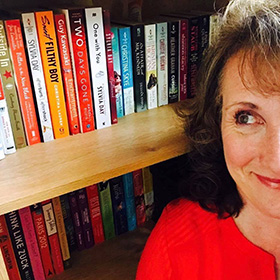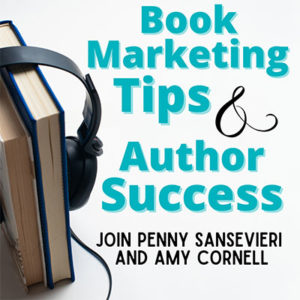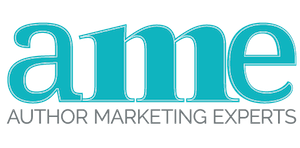Websites for writers are necessary to showcase published work, reviews and accolades, an in-depth bio, and other pertinent information that will matter to readers and other visitors, like media and influencers.
In short, it’s essential for your success.
But websites for writers don’t often include media pages because as a new author, or even a veteran author that hasn’t hit your stride, you may not have much to showcase.
However, an author’s website is the go-to destination for readers to find out more about you and your writing, and (even if you’re brand new) a media page is the perfect way to add an extra layer of information about you and your work – and convince them to buy.
On a media page you can display anything from book covers, author photos, reviews, and more. It makes for a great one-stop destination to showcase all the highlights of your work, as well as supply reviewers or influencers with a way to easily get high-resolution covers images and author photos.
I’m going to go through the steps of creating a media page on your author website and discuss different types of content you can add to it to really bring your site to life.
Step 1: Planning Your Media Page
Before you start adding content, take some time to consider what type of information you want to display, how you want to organize it, and how you want to make it visually appealing. If you’re a new author, you may not have a lot of information, but if this is your 8th book, you’ll probably have a lot more!
Think about the types of content you want to show off in your media page, such as book covers, author photos, reviews, and other marketing materials.
And even if you just have one book out, you should still think long-term.
Think about how you would organize this if this was your 10th book? For example, you may want to categorize different types of content, such as creating a “Book Covers” section and a “Reviews” section.
Once you have a general plan in place, it’s time to start adding content.
Step 2: Adding Content to Your Media Page
Now that you have a plan for your media page, it’s time to start adding content.
Websites for authors are often pretty basic, which is perfectly fine, we’re fans of quality over quantity, but when it comes to your media page, the more you can pack it full of content that makes you look good, the better.
Book covers and author photos: If you’re displaying book covers, author photos, and other images, you’ll need to upload them to your website.
This can be done by uploading them directly to the website, most have enough virtual space to hold basic elements like book covers and author photos, but you can also link to them from an image hosting site such as Imgur or Flickr, or even a file storing site like Dropbox.
Reviews, reviews, reviews: For reviews, mentions, features, book spotlights, it’s always a good idea to link to them but also list them on your media page.
So grab the review copy and paste it onto your website with the proper citation, and then add a link to where the post appeared originally.
If you’re sharing a book spotlight, just a link to the spotlight is fine.
The same is true for a book excerpt.
Other reviews such as a Midwest Book Review and others, can be copied verbatim with the citation and a link.
Media mentions: Websites for authors are often short on big media mentions, but that’s entirely normal, just don’t be shortsighted!
Anything positive that’s been mentioned online – large or small, should be added, and again, with a citation and a link.
Keep in mind that sometimes links “disappear” – I’ve had stories run on me that get archived and vanish into the archival ether, so grabbing a screenshot is always a good idea. You may not want to post this on your media page from the jump, but it’s handy to have if the link should disappear.
Other marketing materials: For other marketing materials such as press releases and promotional videos, you can simply link to the relevant pages or upload the video to your website or grab the HTML code from sites like YouTube or Vimeo to showcase it there.
Speaking and events: If you’re a speaker, or even if you’re planning a book tour or even local events, be sure to showcase your speaker one sheet (if you have one), highlight your tour stops and details, or your event details.
Bonus tip: showcasing “past engagements” is a clever way to let people know you’re in demand, and everyone wants a sure thing, so keeping a list of past events or presentations you’ve given as you’re pitching for new opportunities can carry a lot of weight.
Contact information: This is always a good idea, even if you have a contact page, as are links to any social media accounts that you have.
Step 3: Organizing Your Content
Once you’ve added the content to your media page, it’s time to organize it.
This is where you can really get creative, so think about how you want to organize your content to make it visually appealing and easy to navigate.
If you’re displaying images such as book covers, author photos, and other graphics, you may want to arrange them in a grid or slideshow format. You can also use a carousel or masonry layout to display your images in an attractive way.
For reviews, you may want to create a section dedicated to reviews. You can organize the reviews by book or category, or simply list them in chronological order.
Step 4: Promoting Your Media Page
I say this a lot in our podcast: websites for authors should promote the best of the best of the brand – so your media page should be something you are proud of.
So, the last step in creating a media page on your author website is to promote it.
You want to make sure it’s easy to find and that readers know it’s there.
It should be prominent on your navigation.
You should also link to your media page from other pages on your website, such as your home page and book pages.
Promote it on social media, in newsletters, and on other websites.
You want readers, reviewers, and influencers to be able to get to it easily.
A media page isn’t something that’s often talked about, but it’s an important element of any website, especially websites for authors, and your brand.
With the right content and a little bit of creative design, you can really make your media page stand out and make a great impression on readers.
Resources and Free Downloads
Download our free monthly book marketing planner.
Check out all the episodes of our book promotion podcast anywhere you listen to podcasts!
Be sure to sign up for our newsletter on the right-hand side of our blog homepage. If you haven’t opened a recent one your registration may have lapsed.
Definitely follow us on Instagram for book marketing tips and some much-needed levity!





I am so glad I found your newsletter and Podcast. There are a lot of YouTubers and others touting their expertise, but it all seems like they are copying one another.
I’m just starting and have self-published medium and low content on KDP, but I’m looking at stepping up to quality ebooks and paperbacks, and hardcovers.
Thank you for the no-nonsense information that few have addressed.
Thanks for the comment, Mark and thanks for reading!